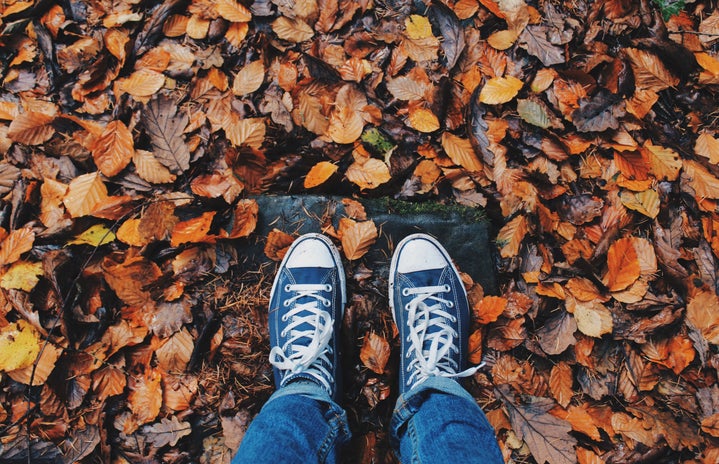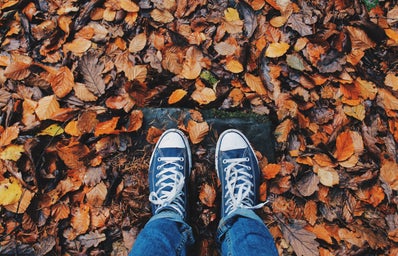Apple butter: according to the Oxford English Dictionary, it is “a paste of stewed apples typically used as a condiment,” but it is so much more to my family. For 60 years, friends and family on my mom’s side have gathered to make apple butter the old-fashioned way. It’s a long process, but the reward is so much sweeter than the dark caramel-colored result of our labors. Apple Butter Weekend, as long as I and my mother can remember, takes place at our family’s summer house in Blue Ridge Summit, Pennsylvania on the second weekend of October, though it started Arlington, Virginia. The house is old—120 years old to be exact—and has been in the family since it was built. The actual creation of the apple butter happens out on the gravel driveway in front of a old, slowly-decaying one-car garage in an enormous copper kettle over an open wood fire.
The process starts Friday evening by hand peeling, coring, and slicing three bushels—about 150 pounds—of Jonathan apples, which takes about two hours if you have enough hands. It’s meticulous work because there can’t be any seeds or skin left during the boiling process. Generally, we cook the apples down a little bit on the stove to make it easier to start the cooking the next morning. There’s a fair amount of joking that goes on, as well.
The real magic begins on Saturday morning no later than 6 am. Before anything edible is put in the kettle, coins with symbolic significance are put in the bottom. Quarters that symbolize all the grandchildren, a silver half dollar from 1929 that represents my grandparents, and an 1904 silver dollar that has been in the kettle every year apple butter has been made, go into the bottom, not only to symbolically add all of us to the mix, but practically, to prevent the apple butter from sticking to the bottom as it’s stirred by a giant wooden paddle. The silver dollar is almost completely smooth because it’s been scraped along the bottom of the kettle for so many years. Then, the semi-stewed apples are added, along with a few gallons of apple cider so we can begin cooking it down over an open fire. The cooking apples require constant stirring for anywhere between eight and twelve hours, so someone needs to man the paddle at all times. Another person periodically scrapes the sides of the kettle with a spoon to keep the apple butter from building up around the sides, as well as fishing out any seeds we may have missed or the occasional leaf that falls into it. We take turns stirring, but everyone sits around and talks, with only occasional breaks to grab some food, coffee, or hot cider from the kitchen. Eventually, as the apple butter begins to thicken and darken, the “weep test” is conducted. A spoonful of the apple butter is placed on a saucer or plate, which is then tipped so that the apple butter runs down. Any extra water that “weeps” from the apple butter means that it needs to cook down more.
Once the weep test has been passed, five pounds of white sugar is added for extra sweetness. The apple butter cooks down for another thirty to forty-five minutes, until it’s time to “dip.” The dipping process is jarring the apple butter, which takes a lot of manpower. Typically, two people “dip” ladles into the hot apple butter, filling mason jars that runners are putting on a table and transferring to the lidding table, where the lids are placed and screwed on. The filled jars are then taken inside and boiled in water for ten minutes to seal them. A typical yield is between thirteen and fourteen dozen jars of apple butter, which is then handed out to family and friends at the conclusion of the weekend. The night culminates in a huge family dinner, which is by no means calm. Apple butter is plentiful, but so are laughs, jokes, stories, and the occasional dig at our favorite relative. The apple butter always tastes amazing, but the process of making it during Apple Butter Weekend is even better. Sometimes, this is the only time a year that I get to see some family members. Our tradition is kind of weird, but so is my family, which is why it’s so much sweeter.
Image Credit: Old World Garden Farms, Sarah Lloyd

